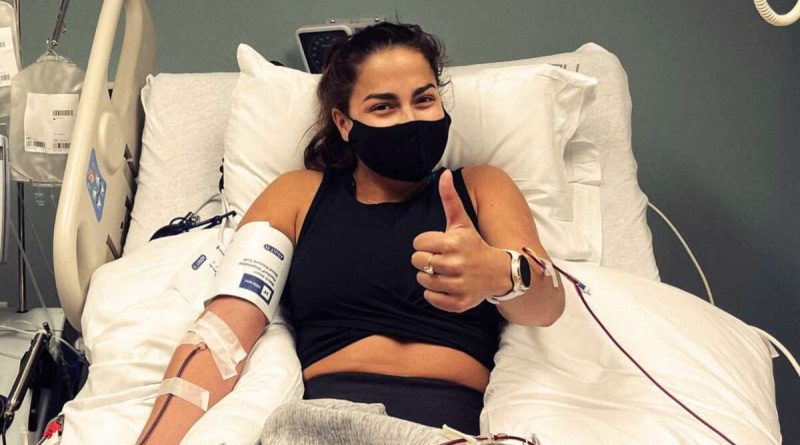I Gave My Bone Marrow for Free. Not Everyone Should Have To.
A few days before Christmas 2021, my three siblings and I received the news every family dreads: Our dad had been diagnosed with cancer.
Dad had seemed fine at Thanksgiving. He had just been complaining about a lingering cold when we forced him to go to the doctor to get some medicine.
And that’s how he found out about his diagnosis.
Acute myeloid leukemia (AML) is an uncommon variety. Only 20,000 people get diagnosed with it each year, and only about 30 percent of patients make it to the five-year mark. When my dad walked into urgent care in Collegeville, Pennsylvania, after a minor complication, they told him to go to the emergency room.
We later learned that had our dad not gone to the doctor, he probably would have only made it a few more days. Not many people can say they’ve come that close.
He immediately started chemotherapy, which he took in stride, while still working for the pharmaceutical company to which he had dedicated most of his professional life. Our family focused on the next step: getting him healthy enough for a bone marrow transplant, which looked like his only hope for beating AML. Both of his brothers and all four of his children lined up to see who would be the best human leukocyte antigen (HLA) match.
Siblings are usually preferred over children for a bone marrow transplant because there’s a higher likelihood of a sibling being a perfect HLA match for the patient. Unfortunately, my dad’s brothers are perfect matches for each other, but not for him. So the doctors looked to the next best match: Lucky me.
In 2020, there were more than 22,000 bone marrow transplants performed in the United States. Of the transplants that were not autologous, only about 30 percent of the donations were from individuals, like me, who were related to the recipient. So the majority of patients rely on donations from strangers, but only 2 percent of Americans are on the registry to be considered for donation.
The odds of finding a perfect match from the registry rely heavily on the patient’s ethnic background. If the patient is white, the odds of a match are 79 percent—but if the patient is black, that number falls to 29 percent. And finding a match is only the first step. Getting the match to actually agree to donate is a whole other beast. It only actually happens about half of the time.
More than 85 percent of bone marrow donations are now done through a process called peripheral blood stem cell apheresis. Instead of a daunting needle jab to the hip, I sat for six hours while 4 million of my stem cells were filtered out of my bloodstream. More than 35,000 people have donated bone marrow to a stranger without a single donor death. So if there is no real risk to the donor, why don’t more people donate?
Prior to the ruling of Flynn v. Holder in 2011, it was illegal to compensate someone for their bone marrow because the National Organ Transplant Act of 1984 treated marrow as if it were an organ. Now, bone marrow is treated as if it were blood or plasma. Over 20 million people donate plasma annually and get paid $50 to $75 per appointment. In fact, the U.S. supplies 70 percent of the world’s plasma partially because it’s the only country that pays its donors.
Still, no one has been paid for their bone marrow.
Companies like Hemeos have tried to create an incentive structure for compensating bone marrow donors up to $3,000 per donation, but they failed to challenge the key player in this field: Be the Match. With over 22 million people on their registry, Be the Match, run by the National Marrow Donor Program (NMDP), is staunchly opposed to compensating donors even though they boast how they pay for all medical costs and travel expenses related to the donation. Their whole identity is predicated on the fact that they rely on altruistic volunteers who are driven by a desire to help others, not by financial gain. “Be the Match will be an obstacle to the use of incentives. They are very jurisdictional,” Peter Jaworski, a professor of ethics at Georgetown University’s McDonough School of Business, tells Reason.
The reality is that no cancer patient, or anyone with a blood disease, actually cares whether their donor supplied marrow for the “right” reasons.
Over a year later, my dad’s transplant has been considered a success. He’s cancer-free but still needs to receive blood products regularly to boost the healthy cells he received from me.
We were lucky that we didn’t have to leave his life up to chance—but had that been the case, we would have been prepared to write a check to anyone who was a perfect match.
The post I Gave My Bone Marrow for Free. Not Everyone Should Have To. appeared first on Reason.com.

